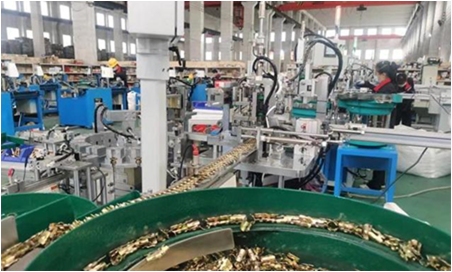ag. . 09, 2024 03:50 Back to list
Guide for Proper Installation Techniques of Wire Rope Clamps for Maximum Safety and Performance
Wire Rope Clamp Installation Instructions
Wire rope clamps play a crucial role in securing the ends of wire ropes and ensuring the integrity of various rigging applications, such as lifting, towing, or suspension. Proper installation is essential to guarantee safety and performance. This article outlines the steps and best practices for installing wire rope clamps effectively.
Understanding Wire Rope Clamps
Wire rope clamps, also known as wire rope clips or cable clamps, are devices used to secure the ends of wire rope to form a loop. They consist of a U-shaped bolt, a saddle, and two nuts. The wire rope passes through the saddle, and the nuts are tightened onto the bolt to clamp the wire in place.
Tools and Materials Needed
Before proceeding with the installation, ensure that you have the necessary tools and materials
- Wire rope clamps (ensure they are rated for the weight and type of wire rope used) - Appropriate wire rope (size and type) - A cutting tool (if needed) - A wrench or socket set - A lubricating spray (optional, for easier tightening)
Step-by-Step Installation Instructions
1. Preparation of the Wire Rope Start by cutting the wire rope to the desired length, ensuring that the cut is clean and free of frays. If needed, use a file to smooth any sharp edges.
wire rope clamp installation instructions

2. Threading the Wire Rope Take the end of the wire rope and thread it through the saddle of the wire rope clamp. Make sure that the wire goes continuously without twisting, and leave ample length for the loop you wish to form.
3. Forming a Loop Create a loop at the end of the wire rope by bringing the free end back parallel to the standing part (the main length of the wire rope). The loop should be sized based on the intended application, ensuring it allows for adequate tension.
4. Positioning the Saddle Place the saddle of the wire rope clamp on top of the wire rope, making sure it sits on the standing part of the rope. This step is critical because the clamp must be positioned correctly to hold the wire securely.
5. Securing the Clamp Insert the U-bolt through the looped end of the wire rope and then position the nuts onto the ends of the U-bolt. Begin tightening the nuts by hand until they are snug. It’s crucial not to overtighten at this stage; simply ensure that the clamp is held securely against the wire rope.
6. Final Tightening With the wrench or socket, carefully tighten the nuts alternately on the U-bolt. This method allows for even pressure distribution on the wire rope, preventing slippage. Follow the manufacturer's recommended torque specifications to avoid damaging the wire rope or the clamp.
7. Inspecting the Installation Once tightened, visually inspect the wire rope clamp installation. Ensure that the saddle is properly seated, and the wire rope should not be visible between the clamp and the rope. Test the stability of the loop by applying some tension before using it in a load-bearing application.
Safety Considerations
- Always adhere to the manufacturer's specifications and guidelines regarding the number of clamps required. As a general rule, use at least two clamps for a secure loop. - Regularly inspect wire rope clamps for wear, corrosion, or deformation, replacing them as necessary to maintain safety. - Never exceed the rated load of the wire rope and clamps.
By following these installation instructions, you can ensure a safe and reliable setup for your wire rope applications. Remember, safety is paramount, and proper installation will lead to successful and risk-free operations.


